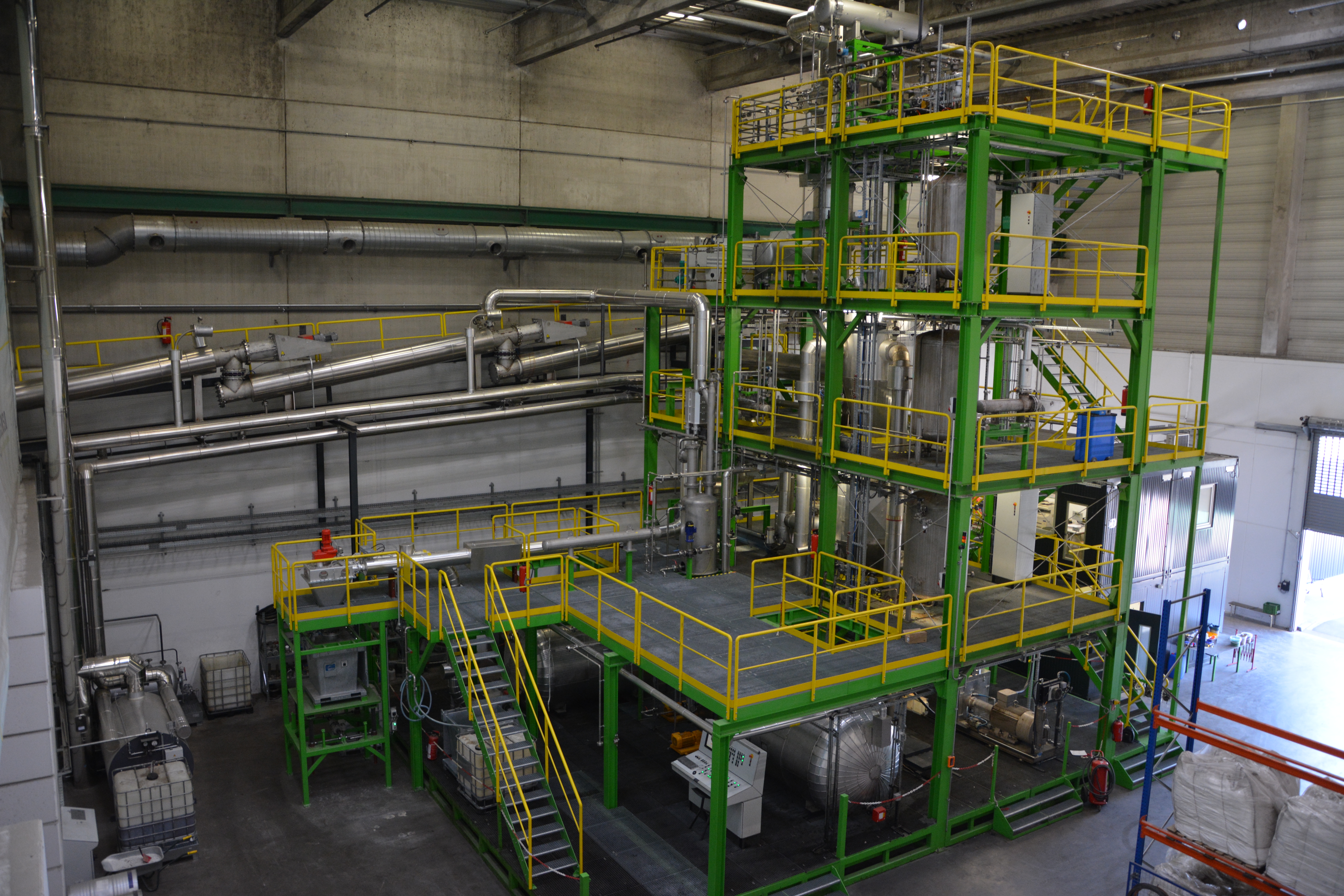Deriving raw materials from waste: Fraunhofer IMWS and RECENSO establish a partnership for chemical recycling
Chemical recycling has tremendous potential to make intelligent use of waste and to allow for a climate-friendly carbon cycle economy at the same time. The Fraunhofer Institute for Microstructure of Materials and Systems (IMWS) and the RECENSO GmbH have agreed to establish a strategic partnership to refine a technology to convert waste containing carbon into valuable raw materials; these can be used in the chemical industry to replace petroleum.

No matter where it comes from - yellow bin, organic or non-recyclable waste - almost all waste streams include usable carbon resources. In many cases, these materials are burnt immediately, thereby releasing huge amounts of climate-damaging carbon dioxide, or, at best, they are used for products that are only marginally challenging to produce in the context of recycling.
The reason for this is that mechanical recycling – the sorting of waste based on its source material – quickly reaches the limits of its feasibility. For one thing, sorting and separating is time-consuming and costly. Another issue is that waste such as the deriving from packaging, for example, often consists of very different material types. To determine the carbon resources it contains, complex and expensive separation techniques are needed.
For this purpose, thermo-chemical recycling methods provide a solution: the source materials are split up into their chemical components and made available again to the chemical industry as raw material in the form of synthesis gas, platform chemicals such as methanol, or so-called pyrolysis oils. These raw materials gained from recycling are characterized by three advantages: First, they reduce the demand for fossil fuels, such as petroleum, which would be required to create such products otherwise. Second, these basic materials are »like new«, so they can also be used in high-value products; thus, they are clearly more flexible and attractive as raw material. Third, carbon is maintained inside the cycle rather than being released as CO2. As a result, carbon bound in waste is made accessible and can be used in new products.
The Fraunhofer IMWS and the RECENSO GmbH intend to establish solutions like these by pooling their expertise. »We have so much experience, as well as excellent research capacities for chemical recycling and pyrolysis. RECENSO has developed the CARBOLIQ technique, which can be used to convert a wide range of waste streams into pyrolysis oil«, says Prof. Bernd Meyer, Head of the Field Office for Carbon Cycle Technologies at the Fraunhofer IMWS in Freiberg and supervisor of the collaboration. »The CARBOLIQ technique is not only highly flexible in terms of the raw materials, but also offers a high yield of fluid products and limits the process temperature to 380 °C. In contrast to other thermo-chemical conversion processes, here the formation of toxic substances, such as dioxin and furan, is prevented.«
»In our cooperation with Fraunhofer, we intend to further develop the CARBOLIQ technology and establish it as the cornerstone of recycling waste containing plastics, a process in which mechanical methods are limited. In this way, we can open up an enormous potential for secondary raw materials and significantly contribute to an economical consumption of resources and the reduction of greenhouse gas emissions«, adds Christian Haupts, the managing partner of RECENSO.
In a first step, in Freiberg, engineers are installing a pilot system to do basic research into raw materials and analyze processes. Here, the focus is on the machinery and technical-technological understanding of the CARBOLIQ technology. Next, based on the findings gained in step one, the technology will be optimized in terms of different raw materials and the quality levels of the new liquid resource.